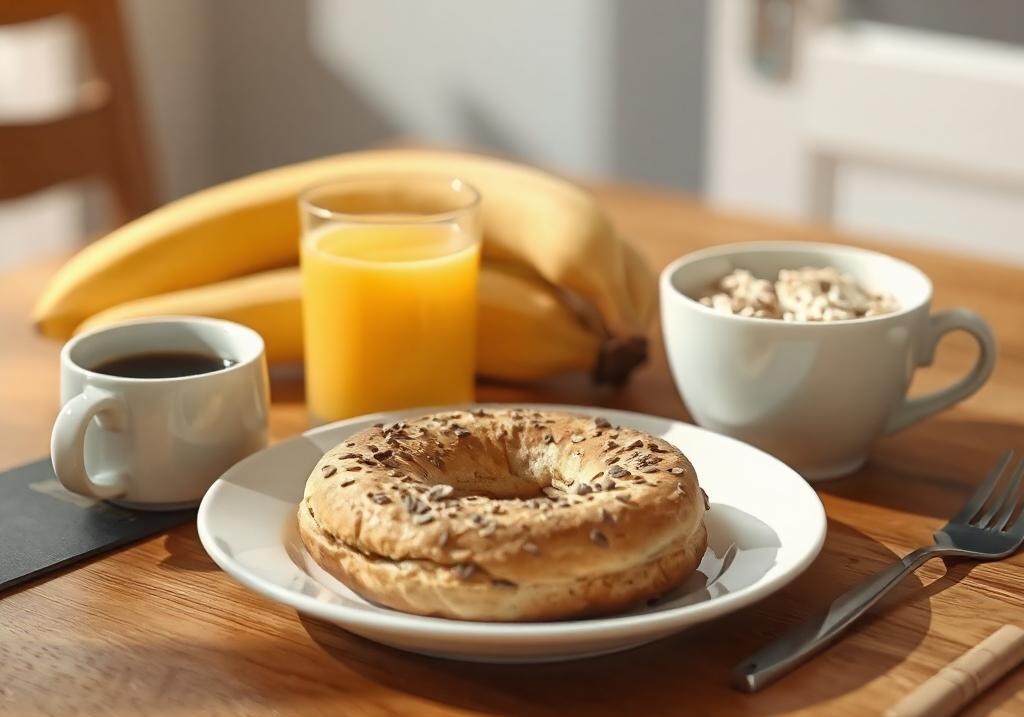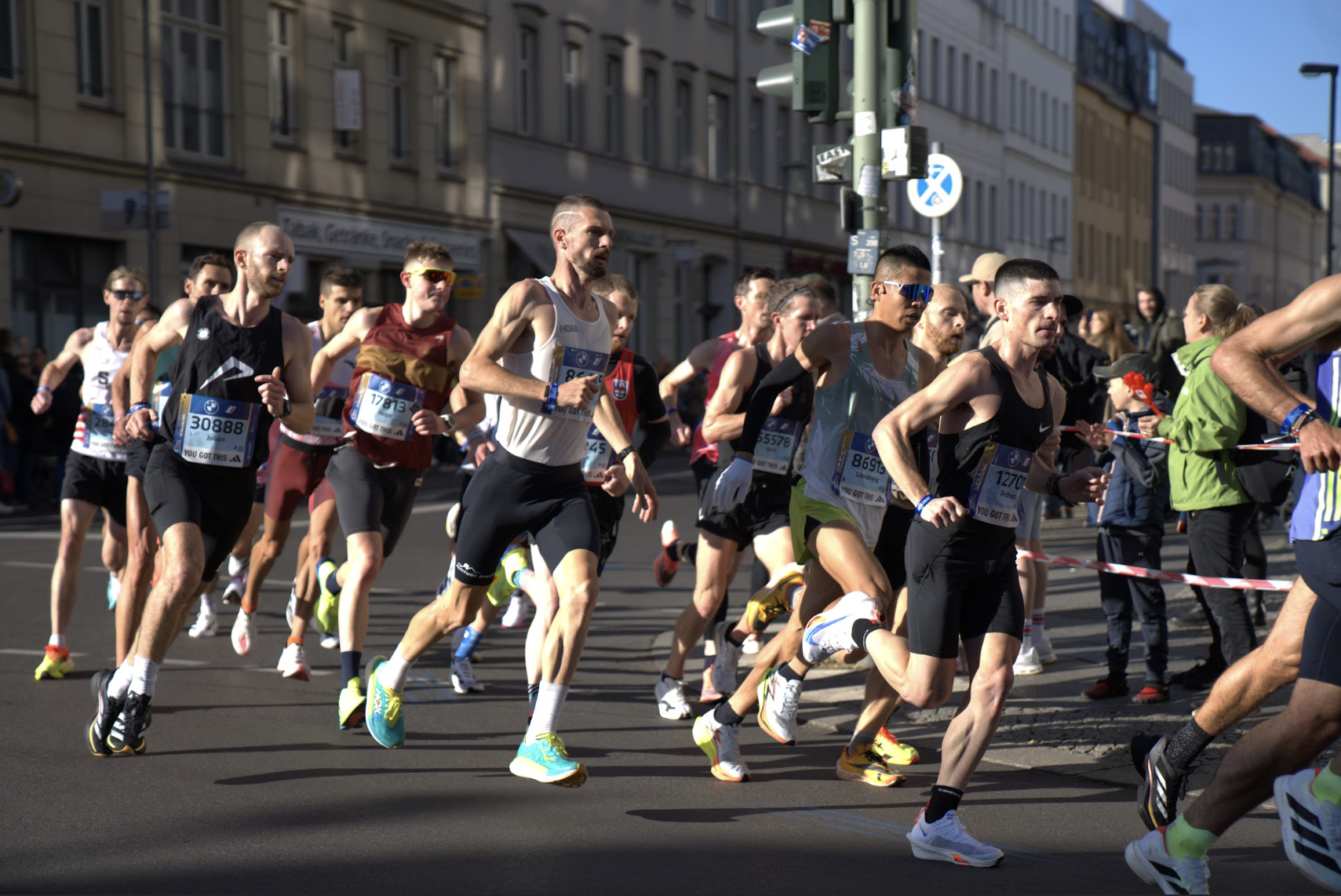How Fast Should You Run?

How fast should you run during training? Should you run at different paces during the week? And what do different types of runs really mean?
These were questions which Tom had, and so Andy joined him on a run to literally take him through his paces and tell him how to structure a week of running.
WHAT DIFFERENT TYPES OF RUNS SHOULD YOU DO IN A WEEK?
Below we’ve got information on all the different types of runs you might do during your training. In the video (and below) we talk about RPE, or Rate of Perceived Exertion. You can read more about that at the end of this article.
Here is a suggestion of how to structure your week based on whether you do three, four, five or six runs in the week. You can shift these around, but try to make sure you get the recovery you need after faster runs and long runs. By ‘FASTER’ you can choose from any of the speed sessions below. If you’re doing two speed sessions a week then try to do two different types of run as they challenge you in different ways.
| 3 RUNS | 4 RUNS | 5 RUNS | 6 RUNS | |
| MONDAY | REST | REST | EASY | EASY |
| TUESDAY | EASY | EASY | FASTER | FASTER |
| WEDNESDAY | REST | FASTER | REST | EASY |
| THURSDAY | FASTER | REST | FASTER | FASTER |
| FRIDAY | REST | EASY | REST | REST |
| SATURDAY | REST | REST | EASY | EASY |
| SUNDAY | LONG | LONG | LONG | LONG |
EASY RUN
This is your daily run and the foundation of your running. It’s basically the 80 part of the 80/20 rule of running, or zone 2 running. It should be a ‘conversational’ pace, meaning you could comfortably chat with a buddy for however long you’re running for. It’s an RPE of 3-4.
It’s a low intensity, and comes with lower injury risk compared to fast runs. It’s also the best way to build your endurance.
Just be careful: most people do their easy runs too quickly. If you’re struggling to talk on an easy run then it’s a sign you should slow down.
TEMPO RUN
Tempo runs, and most of the rest of these runs, are done at a faster speed. Each type of faster run has a different purpose. Remembering the 80/20 rule, you shouldn’t do more than one or two faster days of running per week, and always take an easy day or rest day after a hard run.
Tempos are sustained moderate- to fast-paced runs at 6-7 RPE. It should be 15-60 minutes in length, and still at an aerobic pace.
THRESHOLD RUN
Thresholds get specific and individual to each runner, and they are comfortably hard efforts of around 7-8 RPE. The aim is to run to just below your own lactate threshold. That can take some working out, so read our full post on What Is A Threshold Run? to help figure out what your threshold is.
Threshold runs are typically shorter and faster than tempo runs, but not as hard as an interval. Try shorter runs like 1km or 1 mile reps.
FARTLEK
The name means ‘speed play’, and is somewhere between an easy run and a tempo workout, where you alternate paces between slow and fast, without taking breaks.
The ‘without breaks’ is important here. It means your body has to react from changing between a hard run (6-7 RPE) to an easy run (3-4 RPE), while always on the move. Some fartleks are structured (two minutes hard, two minutes slow), while others could be unstructured (alternating pace based on landmarks like trees or streets, or even to songs on a playlist you’re listening to).
Fartlek runs can be a great way to introduce faster running into your training without doing interval sessions.
INTERVALS
During an interval session, you’ll do a number of repetitions (reps) of short, hard efforts, with recovery periods in between.
A classic interval session might be 10 x 400m, meaning you run 400m at a fast pace (7-8 RPE), then stand, walk or jog for one or two minutes before beginning the next rep.
The speed you run will depend on the distance, so you’ll run a 200m rep quicker than a 800m rep.
PROGRESSION RUN
These runs start out slow and they finish fast.
That could mean you run the second half faster than the first in a negative split. You could do a long run where the final quarter is at a faster pace (or goal race pace). Or you could do a more structured progression run where each mile or kilometre gets faster until you can’t speed up any more. The RPE will likely increase from 3-4 to 7-9 as you progress from zone 2 to zone 4.
HILL REPS
Running on hills is a great way to build up more leg strength, and they also encourage you to run with good form, which is something you can take with you to flat runs.
Hill training can range from running short hill sprints (10-30 seconds at 8-9 RPE), to doing longer reps uphill or extended undulating road or trail tempo runs.
STRIDES
These are short fast runs which are great to do at the end of an easy run, or as part of a warm-up before a faster workout or race. They help you build speed and strength, and improve your form. They are also a great way to give you more confidence at running fast. If you’ve never done them, then give them a go as they are one of the best ways to become a stronger runner.
To run strides, gradually accelerate over a few seconds until you’re running at almost full speed (8-10 RPE), then hold that for up to 10 seconds, before slowing down. Jog or walk to recover (around 45-60 seconds), then repeat a few times. It sounds simple, but it’s very effective.
LONG RUN
Your longest run of the week. The length of your long run will depend on what you are training for, and the purpose of the long run is to build up your endurance and fitness, and to also help prepare you for an upcoming race – so if you’ve got a 10km then you might run up to one hour, but if you’re training for a marathon then you might run 16-20+ miles (we talk about how far your longest run should be in marathon training here).
Just make sure you’re well fuelled and hydrated before a long run, and if it’s a really long run (more than 75-90 minutes) then take fluid and energy (like gels) with you.
RECOVERY RUN
After a very hard run, whether a race or just a big workout, you can go for a 15-20 minute easy paced run to help your recovery and to ease any aches you’re feeling – just don’t go if your legs are still feeling really tired).
AND DON’T FORGET REST DAYS!
Rest days are just as important to runners as all the different types of run. They allow us to adapt to the harder running that we do, and they help to reduce our risk of overuse injuries. You should have at least one full rest day every week.
Some runners also like to have active recovery on non-running days. This could be walking, swimming, cycling or the elliptical, and helps to add some low-impact and low-intensity work to your training.
UNDERSTANDING RPE & RUNNING

Everyone trains differently and at different paces, but the Rate of Perceived Exertion (RPE) can be consistent for all of us. RPE can be a useful guide for how hard you should be running for each of these types of runs, as can using a ‘talking’ scale and thinking about running zones.
RPE 1-2. Zone 1. A fast walk or very easy run. You can talk in full paragraphs.
RPE 3-4. Zone 2. An easy run. You should be able to talk comfortably in full sentences.
RPE 5-6. Zone 3. A steady run. Pushing an easy run or approaching a tempo. You should still be able to talk, but it’s getting harder to speak now, but you can still manage broken sentences.
RPE 7-8. Zone 4. A hard run like a tempo or threshold (or how it feels near the end of a race). It’s harder to speak now, but you should be able to say a few words in a row.
RPE 9-10. Zone 5. A very hard run. This is your fast interval or sprint. You will not be able to speak more than one or two words at this effort.




























Running News
Ingebrigtsen Stars at World Athletics Indoor Championships 2025 – Plus All The Winners!
Sam Ruthe Is First 15-Year-Old To Run A Four-Minute Mile!
Eliud Kipchoge Will Run The 2025 Sydney Marathon!